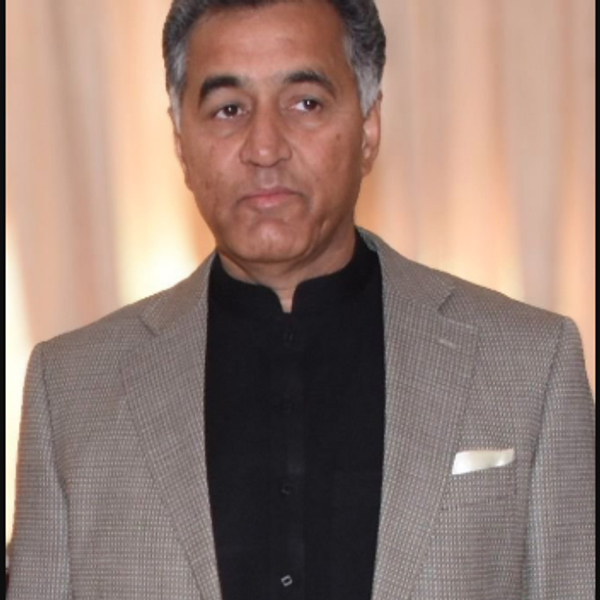What Pakistan needs to do differently for second Australia ODI
The touring party’s strategy for the second ODI in Adelaide on Friday will hinge on adaptability.

Zaid Hassan
Producer
Zaid Hassan, a seasoned sports journalist, led Cricket Pakistan as editor for four years, shaping its coverage with insightful analysis. Now a producer at Nukta, he expands into broader storytelling while remaining a key voice in Pakistan’s sports media.

Alam Zeb Safi
Correspondent Nukta
Alam Zeb Safi is a sports journalist, having served in the capacity for 25 years. Covered so many international sports events on foreign soil also including England and Australia.

Pakistan's Haris Rauf celebrates with his teammates after picking a wicket during the first ODI against Australia in Melbourne.
PCB
Pakistan's approach in the first ODI at the Melbourne Cricket Ground leaned heavily on pace, featuring four frontline fast bowlers.
While this tactic created challenges for Australia with short-pitched deliveries, it wasn’t enough to defend a modest 204-run target, with Australia ultimately winning by two wickets, thanks to a composed finish by their captain, Pat Cummins.
One notable absence in Pakistan’s lineup was a specialist spinner, with the team instead relying on all-rounder Salman Ali Agha for the spin option. But the match did not necessitate a fifth bowler as captain Mohammad Rizwan relied only on four pacers in the 33.3 overs Pakistan bowled. However, this approach may need revision in Adelaide, where conditions are likely to be more conducive to spin.
Specialist spinner required
On the same day as Pakistan’s defeat in Melbourne, South Australia secured a win over Victoria at Adelaide Oval in a Sheffield Shield match. South Australia’s spinners took 12 out of 20 wickets, with Lloyd Pope and Ben Manenti pivotal in dismantling Victoria’s lineup. Pope’s six-wicket haul in the second innings sealed the victory, showing the impact spin could have in Adelaide conditions.
With this context, Pakistan should consider bringing in wrist-spinner Faisal Akram. Faisal has shown promise, picking up 13 wickets in five President’s Cup matches last month. Given Pakistan’s upcoming Champions Trophy commitments, this series is a good opportunity to test him in international conditions.
The current strategy of playing seven specialist batters may need to be adjusted, with Pakistan choosing between Kamran Ghulam and Irfan Khan Niazi to make room for Faisal. As Kamran Ghulam has been batting out of position, Irfan, who has demonstrated consistent form at No. 5, may be the better choice.
Former cricketer Sadiq Mohammad has also suggested that Pakistan play five regular bowlers in the second ODI. He said that Aamer Jamal could have been included in place of Hasnain in the first game, offering both batting and bowling skills at No. 7.
With an all-rounder at No. 7, Pakistan's experienced batters need to assume more responsibility.
Convert starts into big score
In the first ODI, Pakistan only managed 203 runs, with neither senior player Babar Azam nor captain Mohammad Rizwan converting their starts into big scores.
Sadiq Mohammad has urged Babar and Rizwan to anchor the innings, recommending they adopt a solid "V-shaped" batting approach.
"They are both excellent batsmen, and in one-day cricket, they should focus on playing in the V and maintaining a solid approach. If one of them can anchor the innings and stay until the final over, it would be a big advantage for the Pakistan team," Sadiq said in an interview with Nukta.
"Rizwan was batting brilliantly and hit some well-timed shots, but he shouldn’t have played the shot that led to his dismissal," Sadiq added.

He emphasized the importance of Babar overcoming his tendency to stall in the 30s.
"He tends to get stuck in the 30s. In this match as well, he played a back-foot shot when he should have played it on the front foot. The ball stayed low and skidded. Once Babar reaches the 30s, he should focus on shots toward mid-off, mid-on, mid-wicket, and extra cover, which would allow him to score in these areas. Once he passes 30 and reaches fifty, he'll be in a better position to make a big score," Sadiq commented.
Sadiq also stressed the need for Pakistan to play out the full 50 overs. Pakistan’s premature end at 46.4 overs in the first ODI highlighted a missed opportunity to extend their total.
From Australia’s perspective, opener Matt Short expects Pakistan to modify their tactics in Adelaide, given the shorter square boundaries compared to the MCG.
“We saw Pakistan’s tactics with their bowling (in Melbourne) bowling pretty short, but I think they may have to change that a little bit at this ground with the shorter square boundaries which are the complete opposite to the ‘G,” Short told the media on Tuesday.
Australia's batters will remain aggressive
Despite criticism from former Australian cricketer Ian Healy about Australia's shot selection in the first ODI, Short confirmed that Australia intends to continue its aggressive approach.
Healy likened the batting approach of Short and fellow opener Jake Fraser-McGurk to “schoolyard bullies,” expressing concern that they disregarded the conditions.
However, Short maintained confidence in his game plan, stating he intends to stick with his aggressive style.
“I don’t think I’ll change anything,” Short said.
“What I’ve done over the past couple of years has been working really well. I’ll stick to my game and go out there with confidence. I know that I failed last night, but I’m going to play my same role with the same aggressive nature, and hopefully it pays off,” he added.
Given Australia’s aggressive batting mindset, Pakistan will need to be equally bold in their approach. Fielding a lineup with six specialist batters, an all-rounder, and four specialist bowlers, including a spinner, may help Pakistan counter Australia’s tactics effectively. This adjustment could bring balance to the side, especially in conditions where spin is likely to play a significant role.







Comments
See what people are discussing